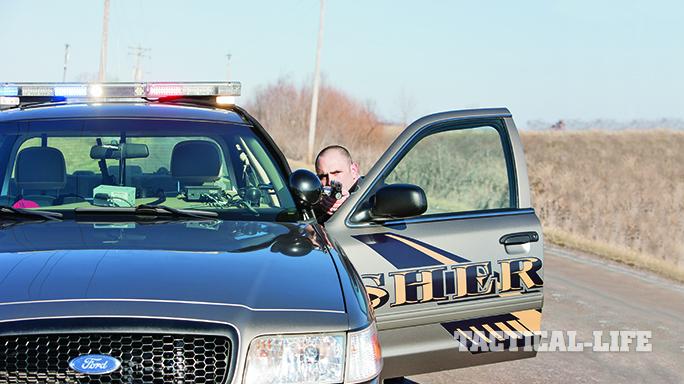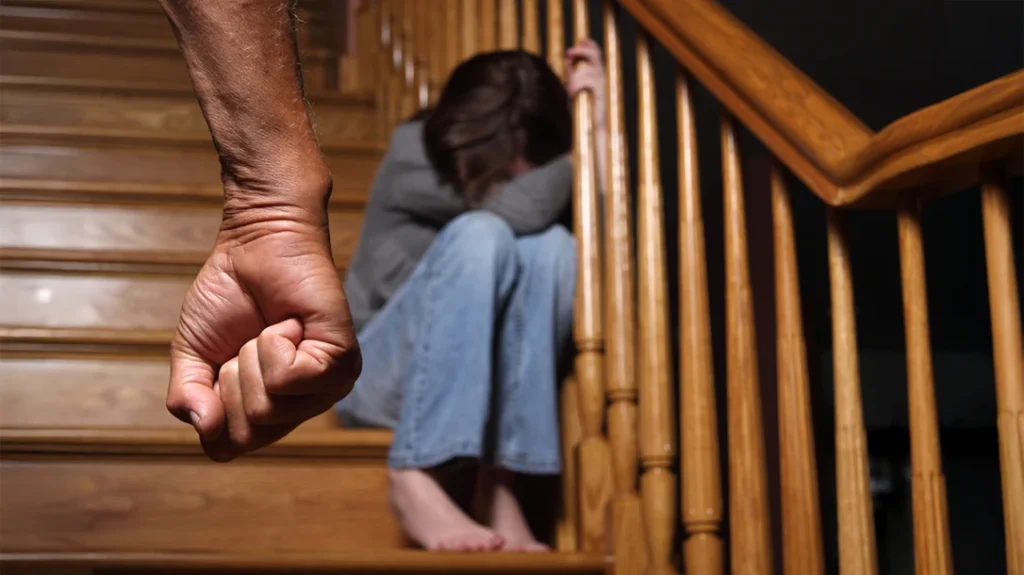We live in a mobile society. Cars are everywhere, and in law enforcement, they serve as our mobile offices. At the start of a shift, unless you are assigned a take-home car, you head out from roll call to find your patrol car. After an inspection to make sure the previous shift didn’t miss any contraband left by a suspect, you load up the gear you’ll need for a shift. Long guns, gear bags—everything from a report case to a lunch box gets stowed in the front passenger compartment or trunk, and off you go, chasing calls.
Bad guys are going to work behind the wheel as well. Armed robbers, dopers, burglars—all ply their trades using their cars, or somebody else’s, to transport themselves from the site of one crime or criminal activity to the next. Frequently the two meet—most times without violence. But sometimes the clash, or crash for that matter, is violent.
Additionally, the problem of officers being assaulted in their vehicles and on foot exists. We bring ourselves to the fight or the call behind the wheel of a police car. Per the National Law Enforcement Officers Memorial Fund (NLEOMF) data on officers killed in 2013, “Ambush attacks were again the leading circumstance of officer fatalities in firearms-related deaths.”
Advertisement — Continue Reading Below
So, the clash of violent suspects with law enforcement officers often takes place in vehicles. But how protected are you behind the wheel, and how can you maximize your police car’s ability to provide cover?
Police Car Protection

In a DEA training tape made several years ago, members of that agency take a four-door sedan out to a secluded range and, after placing two cardboard targets under the front dashboard area of the driver’s side and another simulating a crouched suspect in the backseat floor area, commenced shooting the car full of holes. The barrage recorded on tape is not from just one agent or gun but pretty much every pistol and long gun available to DEA agents at that time: 9mm pistols, .357 revolvers, shotguns with buckshot and slugs, 9mm carbines and 5.56mm AR carbines. The vehicle was shot from the passenger side as well as straight on from the front.
Although the tires are flattened and virtually every square inch of the car has a hole in it, the vehicle starts and the instructor can drive away (limp away is probably a better way to describe it). But the amazing thing: When both targets are checked, neither have any hits.
Advertisement — Continue Reading Below
- RELATED STORY: The Atom PL1 Is the World’s Fastest Police Car
That’s not to say that patrol cars, or any vehicle, are bulletproof—merely that small arms are marginal stop-pers in terms of penetration. Much of this has to do with where on the car the round strikes, the caliber and the bullet design. Certainly, what stops a .38 Special round may be penetrated by a 7.62x39mm projectile fired from an AK.
Further, vehicles are not “homogeneous” or of the same design throughout. Most handgun chamberings, .38 Special or larger, can easily penetrate the side glass windows of cars without deflection. Bullets fired into the front or rear windshields made of safety glass may deflect. In one particular shooting in my agency, the officer fired into the front window but the bullets deflected downward, and most impacted the dash and did not hit the suspect. Bullets fired through laminated safety glass tend to follow the perpendicular angle of the glass. When firing into the vehicle, they deflect downward. When you shoot through from the inside, they travel at an upward angle if they pass through the laminated glass.
Passenger vehicle doors may be penetrated through the thin sheet metal and interior plastic, or the rounds may hit the window gears or framing. Modern automobiles may be safer due to airbags and other safety improvements, but there is certainly less metal used today than patrol cars of old. Of course, patrol cars are also getting smaller. The Ford Crown Vics when I started at the sheriff’s office in 1982 were bigger, heavier and contained more metal in their designs.
Advertisement — Continue Reading Below
Your best protection from incoming fire when using a patrol car as cover is the engine block up front as well as the front and rear wheels and axles.
Get In Position

I strongly recommend that you try various positions of cover with your patrol car. I remember taking a rookie I was training back behind an industrial complex at night on patrol and practicing “debussing” drills, counter-ambush drills and how to use the patrol car as cover.
Just seated behind the wheel or in the passenger seat and using the front “A” pillars as cover takes some work. A right-handed officer firing from the driver’s seat should keep his or her feet inside the car. Once you place your feet on the ground outside the car, they are susceptible to bullets skipping off the deck or fragments of pavement from rounds fired into the asphalt or concrete. Leaning forward, a right-handed officer has to cant his or her pistol outboard to clear the pillar. Another consideration is your cruiser’s spotlight, if you have one; both the handle inside and the light housing itself may get in your way. A right-handed officer in the front passenger seat will have an easier time, but practice both so that it’s easier to get into these positions in a shooting. You can minimize your exposure behind the pillar and dash by extending your legs and slouching in the seat. Once again, except for the window gears and metal framing, side doors in this technique offer little protection.
Advertisement — Continue Reading Below

We always do better shooting around the side of cover versus shooting over the top because our eyes lie one-third of the way down from the top of our heads and we expose too much of our melons when shooting over the hood or trunk lid. Because of the height of the front and rear of the patrol car, a standard braced-kneeling position cannot be used. As an alternative the “modified prone” developed by former Navy SEAL Ken Good can be used. In modified prone, you extend your support foot outward and “roll” upward to shoot from cover and then roll toward the ground to conceal yourself. This technique works well with long guns, too, and allows the shooter to be on his sights prior to rolling up/out from cover. This leads to getting rounds on target more quickly.
- RELATED STORY: Hot Pursuit Motorcycles – Two-Wheeled Enforcers
A common error when using cover is to hug the cover or get too close. By staying back a muzzle distance, plus some, you cut down on time to fire. If you’re close up on cover, you must roll out or up and then extend the pistol or elevate the long gun to the shoulder. By staying back, you can keep your sights on target and reduce the steps needed to fire.
You can shoot under the car by using an “urban prone” position. In urban prone, you lie on your side to fire. The key is to roll the shooting elbow under you. By placing your feet against the wheel of the car, you can make a very small target using this technique. The problem with urban prone is that unless the suspect is a distance away, all that can be seen and shot are whatever is on the ground, such as the suspect’s feet or ankles. That said, members of LAPD SWAT team shot under their marked unit when confronting heavily armed and armored bank robber Emil Matasareanu during the infamous North Hollywood bank robbery and shootout, causing the suspect to surrender (he later died from blood loss from the wounds he received in the legs).
Advertisement — Continue Reading Below
Cover First

If better cover is available and within close proximity, move to it prior to engaging the suspect; there’s a lot of concrete, brick, trees and poles in our modern environment. But if a spontaneous assault occurs while you’re behind the wheel or in the car as a passenger, maximize your effectiveness and protection by positioning behind the most solid points in the car.
If and when you clash with a violent armed offender, you will revert to tactics you’ve trained and learned. Make sure that you practice using your car for cover and shooting over, around and below it.
This article was originally published in ‘Guns & Weapons for Law Enforcement’ February/March 2017. To subscribe, visit outdoorgroupstore.com.
Advertisement — Continue Reading Below






























